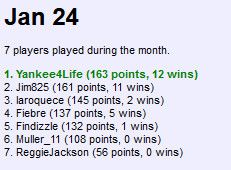Ray Schalk
In an era when the common impression of a baseball catcher was a sturdy player with bulging shoulders, a husky framework, and brute strength, the 5-foot-7 (many sources say 5-foot-9), 155-pound Ray Schalk did not convey an imposing figure behind the dish. But as John C. Ward wrote in Baseball Magazine in 1920, “Schalk is unquestionably the hardest working catcher in baseball as he is doubtless also the brainiest, the nerviest, the most competent. He presents the unique distinction of performing more work than any other catcher and at the same time performing it better. Both in quantity and in quality of service Ray Schalk is unquestionably the premier backstop in baseball.”
Raymond William Schalk was born in Harvel, a small village in central Illinois, on August 12, 1892, the fifth of six children of Herman and Sophia Schalk, German immigrants who had arrived in the United States in 1875. Ray was captain of the Litchfield basketball team, but left high school at the end of his second year to learn the printer’s trade. Two years later he traveled to Brooklyn, New York, to study how to operate the Linotype machine. In 1910, after mastering the intricacies of this noble mechanism, Schalk returned home, but found his desire to progress in his chosen field was not matched by career advancement. Rather, it was Schalk’s participation in local baseball games that soon earned him the promotion he was looking for.
First a member of the town team, he soon moved up to semipro ball for the sum of $2 a game. From there he quickly progressed to Taylorville (Illinois) in the Class D Illinois-Missouri League, where he caught 64 games, batted .387, and earned $65 a month. Later in the 1911 season, the 18-year-old moved up to the Milwaukee Brewers of the American Association, and appeared in 31 games.
On August 11, 1912, the day before his 20th birthday, Ray Schalk saw his first major-league game – and he was the starting catcher in it. Arriving by streetcar minutes before the first game of a doubleheader against the Philadelphia Athletics, the rookie was told by manager Jimmy Callahan, “Young man, here’s your pitcher, Doc White. You’re the catcher.” In his first at-bat, Schalk grounded out to Frank Baker but did manage to get a hit later in the game against Chief Bender. Reflecting back on the experience nearly 50 years later, Schalk reminisced, “You think of no-hit games and playing in the World Series, but that first game was my greatest day.”
Schalk played in 23 games for the White Sox in 1912, batting a respectable .286. But it was his energy, willingness to learn, and outright desire that made the biggest impression on his coaches and teammates. The electric Schalk soon became the favorite of White Sox coach Kid Gleason, who helped the young backstop hone his skills. “We’d start a game at 3:00 P.M., but he’d have me out practicing at 9:30 in the morning. We’d work on catching the double steal, he had me chasing from behind the plate to field bunts, and running under pop flies. He taught me to crouch over and make myself a target on the throws from the outfield. He taught me to give, or yield with the catch, to never hold the ball high when making a throw – to cock my hand by my ear. He was a tireless worker.” And Schalk was undoubtedly an indefatigable student.
The diminutive Schalk, weighing a scant 148 pounds in his first season, was thought at first too small to catch Chicago ace Ed Walsh’s sharply breaking spitball. But with the help of Gleason, he was soon handling Walsh better than Billy Sullivan, Bruno Block, or Red Kuhn did. Even more difficult than catching Walsh was backstopping Ed Cicotte, who had more pitches than a carnival barker. Said Schalk about Cicotte, “He had command of every type of pitch. That includes the knuckler, the fadeaway, the slider, the screwball, the spitter, and emery ball.”
But more important than handling the ball was Schalk’s ability to handle his pitchers. John Sheridan of The Sporting News wrote in 1923, “… Schalk at all times insists that his pitcher shall have and use his stuff, that he shall be able to control it, and that he should use it whenever the catcher calls for it. The manner in which Schalk handles his pitchers must be of inestimable value to his team. He, more than any catcher that I can remember, makes a pitcher work up to the mark all the time. No catcher that I have known made or makes the pitcher work right, stand right on the rubber and use a correct motion, hold runners close to base, better than said Schalk. As a manager of young pitchers, Schalk stands head and shoulders above the others of all time.”
Though it may be inferred that Schalk earned his nickname, “Cracker,” because he cracked the whip over his White Sox hurlers, the moniker may have been hung on him by White Sox outfielder Shano Collins. Apparently Collins saw a resemblance between Schalk’s physique when viewed from behind and a cracker box. Another version holds that it was probably someone in the White Sox clubhouse who spied Schalk on his first day with the team and asked, “Who’s the little cracker pants?” The nickname stayed with the popular Schalk long after his playing days ended.
Schalk played the catching position like a fifth infielder. He was one of the first catchers to regularly back up infield throws to first base and outfield throws to third. His speed, alertness, and prowess led to his claim of being the only major-league catcher to make a putout at every base. His first putout at second base occurred in 1918 against St. Louis in Chicago. On a hit-and-run, the Browns’ Ray Demmitt sped past second as Joe Jackson made a great catch in deep left off the bat of Joe Gedeon. Schalk, in the middle of the diamond, ran to second to take the relay from White Sox shortstop Swede Risberg and slapped the tag on Demmitt. Putouts at first were more common because Schalk would often follow runners to first on hits to right field. Chick Gandil, the first baseman, would then decoy himself away from the bag, drawing the runner into a wide turn at first. Right fielder Eddie Murphy would then peg the ball back to Schalk at first to tag out the unsuspecting runner.
Over his 18-year career (1,757 games with the White Sox and five with the New York Giants in 1929), Schalk participated in more double plays (222) than any other backstop in history, and his lifetime total of 1,811 assists ranks second all-time behind 19th-century backstop Deacon McGuire. Schalk led the American League in fielding percentage five times and in putouts nine times, the latter still a major-league record entering the 2015 season. He also arguably shares the record for career no-hitters caught with four (historians have since dismissed Jim Scott’s May 14, 1914, gem, as he lost his no-hitter in a losing effort in the 10th inning).
In 1916 Schalk established the single-season stolen-base record for catchers with 30, a mark not broken until 1982, when John Wathan swiped 36 bags. Though his lifetime batting average was just .253, the lowest of anyone elected to the Hall of Fame as a position player, Schalk was considered an excellent bunter, both for the base hit and the sacrifice. Cracker was a frequent selection to Baseball Magazine’s All-Star American League Team, and was named by both Ty Cobb and Babe Ruth to their own personal all-time all-star teams.
Schalk won his only World Series with the White Sox in 1917, a year in which he hit .226 with fewer than 20 extra-base hits in 140 games. But he caught all six games in the World Series and the New York Giants, who led the National League in stolen bases, attempted just six steals during the fall classic, getting caught twice. In the White Sox’ dramatic Game Five comeback, Schalk’s own skill on the basepaths paid off. In the seventh inning he drew a throw from his Giants counterpart, Bill Rariden, on the front end of a double steal with Chick Gandil that scored the tying run before the White Sox rallied for three runs in the bottom of the eighth to win, 8-5. They went on to capture the championship two days later in New York.
From 1913 to 1926, Schalk caught nearly 80 percent of the White Sox’ contests. His durability was legendary – broken fingers, deep spike lacerations, and sprained ankles did not sideline him. During one game against the Tigers in 1922, Schalk was knocked unconscious by a foul tip. Trainer William “Doc” Buckner of the White Sox resorted to artificial respiration and use of oxygen to revive him. Recounted Buckner, “As soon as he got his breath and collected his senses, he immediately wanted to get back behind the plate.”
Schalk’s best season was probably 1922, when he batted .281, one point below his career best of .282 (in 1919). In that 1922 campaign Schalk hit four of his 11 career home runs, stole 12 bases in 16 attempts, hit for the cycle on June 27 (the next White Soxer to do so was Jack Brohamer in 1977), and drove in 60 runs. He led the league in putouts and assists, while committing only eight errors, tying the American League record for fielding percentage at .989. He finished third in voting for the 1922 American League Most Valuable Player Award.
Ray Schalk’s silence regarding the Black Sox Scandal of 1919 and his status as one of the honest men of the Series (in which he batted .304) is well known. Schalk knew something was amiss when both Cicotte and Lefty Williams continually crossed him up on pitches. Regarding the penalties doled out to the conspirators, Schalk did not disagree with the banishment, but later portrayals of the eight as vicious criminals bothered him.
In a discussion with Ed Burns of the Chicago Tribune in 1940, Schalk conveyed his compassion: “As long as I live, I’ll never forget the day Charles A. Comiskey come into the clubhouse and told eight of the boys they had been exposed and were through forever. It was a shocking scene and my mixed emotions never have been straightened out since I watched several of the ruined athletes break down and cry like babies. I never have worried about the guys who were hard-boiled, but those tears got me.”
Pennant purgatory followed the White Sox after the revelation of the Series fix in late 1920. The dismissal of seven players (Gandil had retired after the 1919 fiasco) wore a large hole in the team that left the lineup talent-threadbare for years. But Schalk’s keen efforts on and off the diamond helped bring respectability to the club. In addition to his MVP-caliber year in 1922, Schalk was responsible for discovering future Hall of Famer Ted Lyons in March 1923 at Baylor College in Waco, Texas. Lyons joined the club later that year in St. Louis, and would collect a franchise-record 260 victories for the White Sox.
In 1955 Schalk was named to the Baseball Hall of Fame by the Veterans Committee. Fittingly, he was inducted to the Hall on the same day as Ted Lyons, the man he “discovered” 32 years earlier. At the ceremony, Schalk thanked his strongest supporter, his wife, the former Lavinia Graham, saying, “Whatever I’ve accomplished, I owe to Mrs. Schalk.”




